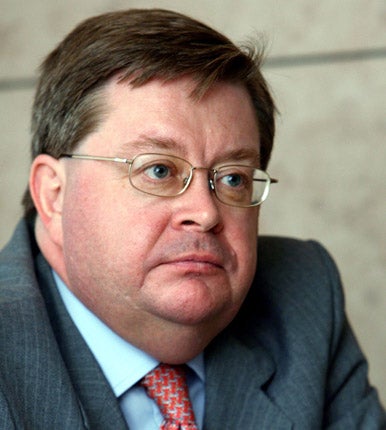Unbalanced recovery poses threat, warns BoE rate-setter
Exclusive: The deficit has been exacerbated by Britain’s trade gap in goods

An unbalanced UK recovery driven by domestic spending poses a “number of risks” including damage from a stronger pound, the Bank of England rate-setter Ian McCafferty has warned.
His intervention came as the current account deficit – the broadest measure of the nation’s financial standing on trade and investment with the rest of the world – ballooned to a record 6 per cent of GDP in the final three months of 2014, bigger than during the boom of the late 1980s.
The deficit has been exacerbated by Britain’s trade gap in goods, as well as falling income on its overseas investments. Despite government plans in 2010 to achieve a balanced recovery, domestic household spending is driving the economy while trade and business investment has lagged behind.
Mr McCafferty, a member of the Bank’s Monetary Policy Committee, told The Independent that the MPC was keeping a “close eye” on the current account as well as watching for risks from a stronger pound, which will hit exporters and increase the burden on household spending to keep the recovery going.
A €1.1trn quantitative easing programme from the European Central Bank (ECB) has sent sterling close to a seven-year high against the euro, making UK goods more expensive in its biggest export market.
He said: “The current shape of the recovery introduces a number of risks which we have to keep a close eye on ... In particular, the fact that we have a healthy recovery at this stage, whereas other policymakers – particularly the ECB – are carrying out further policy easing, does give us an upward risk on the currency in the short term, which would exacerbate that dependence on domestic demand.”
He added: “But at the same time I would rather have a recovery than no recovery.”
Interest rates could also “potentially” turn negative, Mr McCafferty said, adding that it was up to rate-setters “to consider all eventualities” after the cost of living hit an all-time low of 0.3 per cent in January. The Bank cut interest rates to 0.5 per cent in March 2009 but refused to go further for fear of harming a banking system that was still weak at the time. Banks have since become more resilient, meaning rates could sink even lower if necessary, he added. “Have we run out of ammunition? No we haven’t.”
Could they turn negative? “Potentially,” he said. “There comes a point – and it will be interesting to watch what happens in other countries where negative rates are already in place – where you get a behaviour change.
“You don’t want to hold reserves at a penal rate when you could simply build yourself a high-security storage facility and hoard cash.”
Subscribe to Independent Premium to bookmark this article
Want to bookmark your favourite articles and stories to read or reference later? Start your Independent Premium subscription today.

Join our commenting forum
Join thought-provoking conversations, follow other Independent readers and see their replies